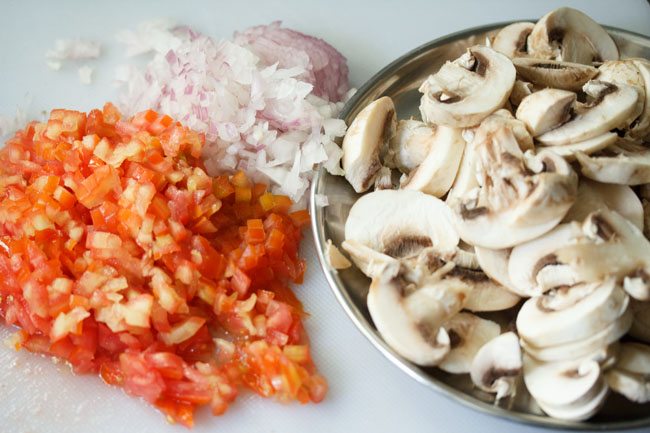As a fourth year college student, I’ve spent a good amount of time cooking for myself and experimented with a lot of different cuisines ranging from Italian to Southeast Asian-inspired dishes. Within all of that, I’ve also tried to transition towards a more plant-based diet. Along with getting some more veggies in my meals, eating less meat can also help reduce your carbon footprint since a lot of poultry and beef farming can consume a lot of water as well as contributing to deforestation and the emission of greenhouse gasses. There’s a lot of other benefits to eating less meat, but as we all know, it definitely is hard to make that transition. The hardest part? The taste. Many of the plant-based options for meals involve replacing meat in a dish with some other protein like tofu. Although this is a great idea, tofu itself has no taste since it’s literally just processed soybeans. The solution to this issue may come from looking at our taste buds themselves.
Although the number of ‘tastes’ our tongues can perceive has been contested over the years, the most important one for our problem is umami. Umami is a flavor that Japanese researcher Kikunae Ikeda found in a type of seaweed called ‘kombu.’ He concluded that this taste was a result of the salts of glutamic acid, which is also found in meats. Glutamic acid also includes monosodium glutamate or MSG (which has no conclusive evidence proving that it’s toxic btw). Glutamates (which are the proteins made up of glutamic acid) act very similar to table salt, but instead, it enhances how our tongues perceive salt while salt brings out the flavor in our food.

Other chemical compounds that contribute to savoriness include the proteins inosinate (which are exclusively in meats and fish) and guanylate (which can be found in plants). This savoriness is very subtle, but its presence is still crucial to the flavor of food, just as salt makes food seem more flavorful. What foods have these compounds and are also plant-based?

As a person of a South Indian background, I was raised with a mostly vegan diet. Of course, I enjoy a good beef roast and chicken curry, but my favorites are the veggie dishes that my mom made since they were just as savory as the meat ones. One thing I noticed was the presence of tomatoes and onions in most of these dishes. Tomatoes (as well as mushrooms) have a high concentration of glutamate, and as we previously discussed, this contributes to the umami flavor we perceive. Onions, however, derive their flavor from sulphuric compounds– which also make us cry. When we chop onions, we break up those compounds, which are further broken down while cooking and releases more of the onion flavor and brings out its sweetness. If you’re in a pinch and can’t find a space to add these vegetables into your dish, you can also try adding MSG.

Of course, switching over to a fully plant-based diet is difficult and you should take it step-by-step. Just remember that achieving savoriness from your veggies doesn’t have to be complicated and can be as easy as 1-2-3…
Resources:
Berry, Donna. “The Science of Savory.” Food Business News RSS, Food Business News, 11 Apr. 2016, https://www.foodbusinessnews.net/articles/6480-the-science-of-savory.
Lang, Ariane. “Is MSG Truly Unhealthy? All You Need to Know.” Healthline, Healthline Media, 15 Nov. 2021, https://www.healthline.com/nutrition/msg-good-or-bad#what-the-research-says.
Lisa. “Savory vs. Sweet Onions & What Makes a Great Salad.” The Cultured Cook RSS, https://theculturedcook.com/2015/09/savory-vs-sweet-onions-an-easy-crispy-salad/.
Loria, Joe. “How Eating Less Meat Can Save the Planet.” World Animal Protection, 15 Apr. 2021, https://www.worldanimalprotection.us/blogs/how-eating-less-meat-can-save-planet.
Nunez, Kirsten. “Types of Taste: What to Know about Taste and Flavor.” Healthline, Healthline Media, 15 May 2020, https://www.healthline.com/health/types-of-taste#umami-taste.


